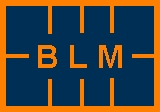Innovative High-tech Pulse Oximetry at BLM
BLM is an enterprise for both basic- and applied research in the field of biomedical technology. Our focus of interest includes genuine new technologies and highly innovative solutions. In the field of pulse oximetry, we compare ourselves directly with the evaluation algorithms of MASIMO ® and NELLCOR ®. In the field of pulse oximetry in particular, we are, in our view, at least as good as our international competitors.
In our special field - Fetal Pulse Oximetry - there are only a few competitors, i.e. Nellcor ®with Oxifirst TM
Fetal Pulse Oximetry System and OB Scientific ® with the OBS-500 Fetal Oximeter TM. Both of the competitors use Reflection Pulse Oximetry, whereas BLM favors the more accurate Transmission Pulse Oximetry together with the BLM-made Sensor FOTOS.
Applicator
BLM has developed a device for application of the sensor FOTOS in Fetal Pulse Oximetry, which allows the user to fix the sensor to the skin of the presenting part of the fetus with a predefined torque. Such a precise application improves the sensors’ position in /on the tissue and thereby the quality of the recording data. So the oxygen saturation can be continuously monitored with a well fixed sensor during the whole delivery.

 Figure: Applicator (gold-colored) with applicator rod, sensor with sensor cable and plug, and an additional guide tube in
a disassembled (left) and assembled (right) status.
Figure: Applicator (gold-colored) with applicator rod, sensor with sensor cable and plug, and an additional guide tube in
a disassembled (left) and assembled (right) status.
Calibration
Pulse oximeters are generally only calibrated by the manufacturer. The users do not have to do this themselves. The function of calibration is to provide a ‘true’, stationary arterial oxygen saturation apart from associated auxiliary variables. For this purpose, the application of an arterial catheter and the analysis of the blood samples through a CO-Oximeter is necessary. The Calibration of the Pulse Oximeter for application to a foetus brings with it additional challenges. Access to the foetus is very limited, ethical considerations demand that the method be as discreet as possible. Because the human foetus’ oxygen saturation levels lie between 10% and 70% (100%), it is necessary to provide calibration for this entire area. It is not ethically possible to measure the “true arterial oxygen saturation.” This leaves two possible solutions: a foetal animal model and 2) a ‘halfbiological in vitro’ calibration. This second possibility has been developed and patented by BLM. This has performed especially well for the calibration of foetal pulse oximetry.
Back
|





